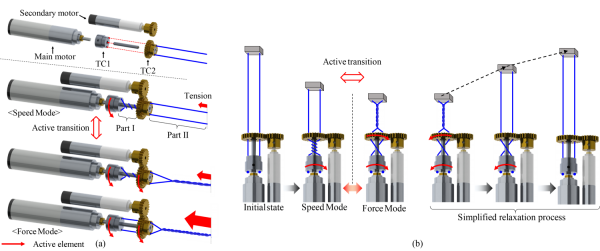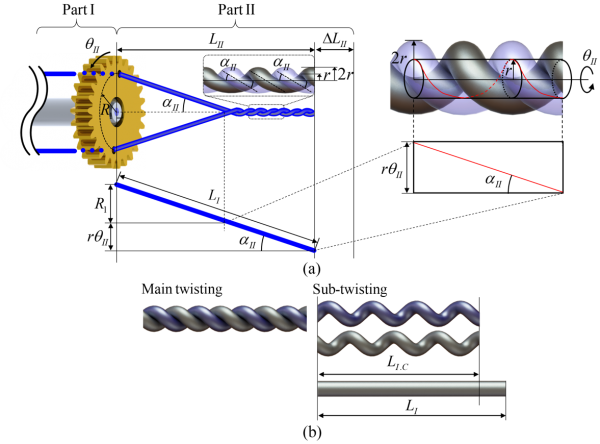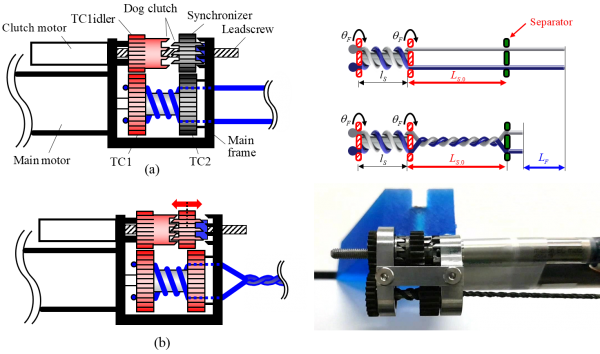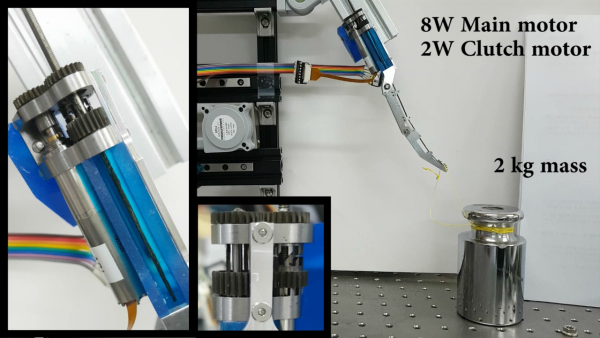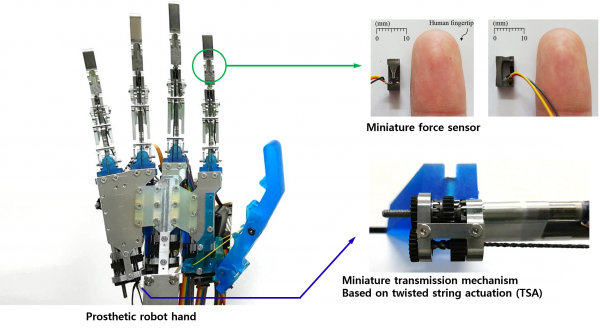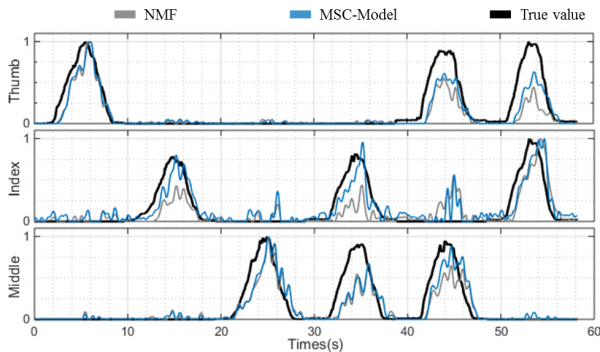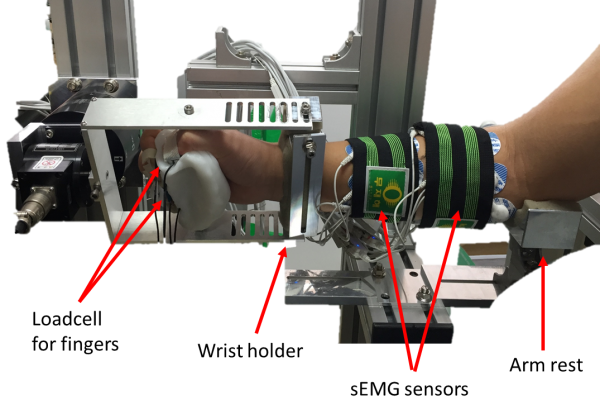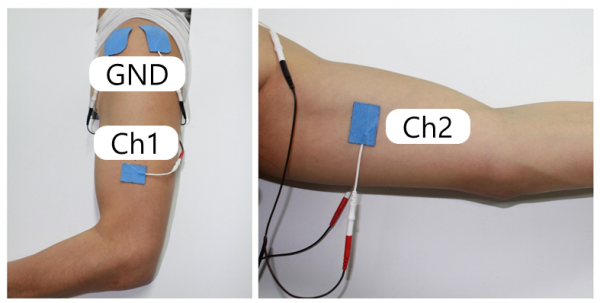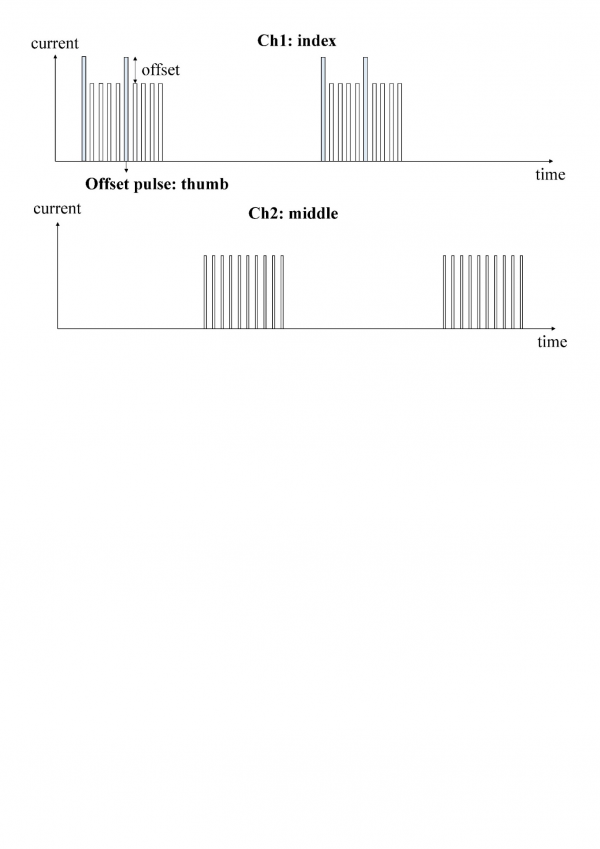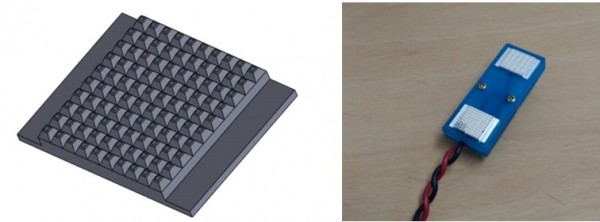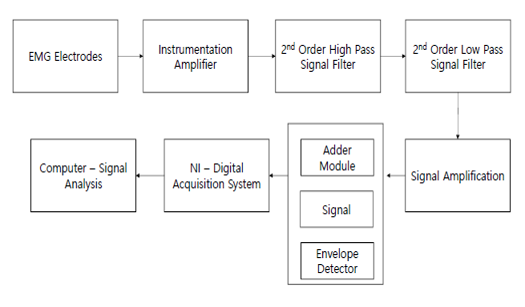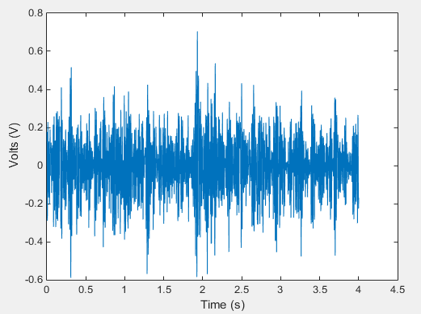본문
| Developing a Prosthetic Robot hand is one of the major research area in our laboratory.
There have been continuous efforts on developing the anthropomorphic robot hands for various purposes either in the academy and the industry. Among many, considering a number of upper limb amputees, much attention has been paid to the prosthetic robot hands. However, it still has many limitation in hardware and interface with human.
Our research for the prosthetic robot hand is divided into Prosthetic hand Hardware, Estimation of human intention and Current Feedback to human.
Prosthetic hand Hardware
Using the active dual-mode twisted string actuation (TSA) mechanism and tiny tension sensors on the tendon strings, an anthropomorphic robot hand is newly designed in a compact manner. Thanks to the active dual-mode TSA mechanism, which is a miniaturized transmission, the proposed robot hand does have a wide range of operation in terms of the grasping force and speed. It experimentally produces maximally the fingertip force of 31.3N and minimally the closing time of 0.5s in average. Also, tiny tension sensors with the dimension of 4.7(width)x4.0(height)x10.8(length)mm are newly presented and embedded at the fingertips in order to measure the tension on the tendon strings, which would allow the grasping force control.
Dual-Mode Twisted String Actuation (TSA) Our major research topic is an active dual-mode twisting actuation mechanism, which is an automatic transmission system based on twisted string actuation (TSA). This mechanism produces two different transmission ratios by adjusting the radius of a twisted string. Automatic mode switching between the two transmission ratios is implemented using an active control mechanism.
Related Reference [1] Y. J. Shin, H. J. Lee, K.-S. Kim, and S. Kim, "A robot finger design using a dual-mode twisting mechanism to achieve high-speed motion and large grasping force," Robotics, IEEE Transactions on, vol. 28, pp. 1398-1405, 2012. [2] Shin, Young June, et al. "Development of anthropomorphic robot hand with dual-mode twisting actuation and electromagnetic joint locking mechanism." Robotics and Automation (ICRA), 2013 IEEE International Conference on. IEEE, 2013. [3] S. H. jeong, Y. J. Shin, K.-S. Kim, and S. Kim, "Dual-Mode Twisting Actuation Mechanism with an Active Clutch for Active Mode-Change and Simple Relaxation Process," in IEEE/RSJ International Conference on Intelligent Robots and Systems, 2015. [4] S. H. Jeong, K.-S. Kim, and S. Kim, "Development of a Robotic Finger with an Active Dual-mode Twisting Actuation and a Miniature Tendon Tension Sensor," presented at the IEEE International Conference on Advanced and Intelligent Mechatronics, 2016. [5] S. H. Jeong, K.-S. Kim, and S. Kim, "Designing Anthropomorphic Robot Hand with Active Dual-Mode Twisted String Actuation Mechanism and Tiny Tension Sensors", IEEE Robotics and Automation Letter, 2017 [6] S. H. Jeong, K.-S. Kim, and S. Kim, "Control of and Experimentation on an Active Dual-Mode Twisted String Actuation Mechanism," presented at the IEEE International Conference on Advanced and Intelligent Mechatronics, 2017. [7] S. H. Jeong, Y. J. Shin and K. S. Kim, "Design and Analysis of the Active Dual-Mode Twisting Actuation Mechanism," in IEEE/ASME Transactions on Mechatronics, vol. 22, no. 6, pp. 2790-2801, Dec. 2017. [8] S. H. Jeong, H. J. Lee, K. R. Kim and K. S. Kim, “Design of a Miniature Force sensor based on Photointerrupter for Robotic hand,” Sensor and Actuators A : Physical, vol. 269, pp. 444-453, Jan. 2018 [9] S. H. Jeong and K. S. Kim, “A 2-Speed Small Transmission Mechanism Based on Twisted String Actuation and a Dog Clutch,” in IEEE Robotics and Automation Letter. Jan. 2018
Model-based estimation of individual finger motion of amputee using surface EMG signal
We generate a model that estimate individual finger motion using surface EMG signal of amputee, who has had a forearm amputated. The model must be generated using only surface EMG data because the amputee doesn’t have fingers and cannot provide the actual finger-motion. Thus, the conventional models based on supervised learning, such as linear regression and artificial neural network, cannot be used in this case. In the MSC, the model is generated in semi-unsupervised way, with the help of some mathematical techniques, nonnegative matrix factorization, common spatial pattern, and etc. The model estimates continuous motion of individual fingers simultaneously (currently three digits – the thumb, index, and middle fingers) and provide the input command signal to each finger of the prosthetic robot hand.
Related reference [1] P. Kim, K.-S. Kim, and S. Kim, "Using common spatial pattern algorithm for unsupervised real-time estimation of fingertip forces from sEMG signals," in Intelligent Robots and Systems (IROS), 2015 IEEE/RSJ International Conference on, 2015, pp. 5039-5045: IEEE.
Two-Channel Electrotactile Stimulation for Sensory Feedback of Fingers of Prosthesis We suggested a novel method for sensory feedback of fingers of prosthesis. By introducing the concepts of ‘intermittent stimulation’ and ‘offset pulses’ into two-channel electrotactile stimulation, three independent sensory variables, i.e., touch of thumb, the forces of the index and middle fingers, was able to be delivered to the users. The users successfully utilized three fingers information from sensory feedback in controlling the prosthesis [1]. The concept of 'offset pulses' also can be utilized to evoke two modalities simultaneously in one electrode, which is so called 'Mixed-modality stimulation' [2]. The Mixed-modality stimulation is an attractive method for modulating two modalities independently with only one electrode, and it could be used for implementing a compact sensory feedback system that is able to provide two different types of sensory information from prosthetics.
<Reference> [1] K. Choi, P. Kim, K.-S. Kim, and S. Kim "Two-Channel Electrotactile Stimulation for Sensory Feedback of Fingers of Prosthesis," in Intelligent Robots and Systems (IROS), 2016 IEEE/RSJ International Conference on, 2016 (in press) [2] Choi, Kyunghwan, et al. "Mixed-Modality Stimulation to Evoke Two Modalities Simultaneously in One Channel for Electrocutaneous Sensory Feedback." IEEE Transactions on Neural Systems and Rehabilitation Engineering (2017). (Early access)
Robust EMG Signal Acquistion
The aim of the research is to develop a robust EMG signal acquisition system using dry EMG electrodes. The goal is to reduce source noise as much as possible and improve the signal quality in terms of signal to noise ratio. The development of the EMG sensor research focuses on application on robotic prosthesis. The current status of the project is the development of a toothed surfaced EMG electrode made out of solid silver which has shown good promise in the clean acquisition of the EMG signal. The toothed surface also presents an advantage of increasing friction with the skin so the motion artifact can be reduced from external influences. Detailed validation of the electrode will result in the electrode’s implementation in a multi-channel signal acquisition system.
Fig. x. Title
Fig. x. Title
Fig. x. Title
|

